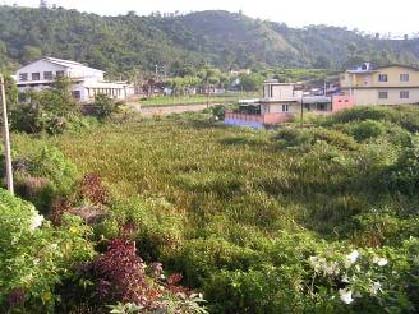 The initiative on hill wetlands in the Nilgiris Biosphere Reserve is supported through this. The area is located at the junction of the Eastern Ghats and the Western Ghats, or Sahyadris, the two prominent mountain ranges that run almost parallel to the coastlines of Peninsular India and is home to indigenous forest people and is a rare repository of mountain biodiversity.
The initiative on hill wetlands in the Nilgiris Biosphere Reserve is supported through this. The area is located at the junction of the Eastern Ghats and the Western Ghats, or Sahyadris, the two prominent mountain ranges that run almost parallel to the coastlines of Peninsular India and is home to indigenous forest people and is a rare repository of mountain biodiversity.
The Nilgiris is home to unique wetlands that are the source of sustenance of numerous animals and human communities. Wetlands are among the more important reservoirs of biodiversity that nature has painstakingly crafted over millions of years.
In the Nilgiris, wetlands have been perceived as wastelands associated with disease, difficulty and danger. Emphasizing the negative impacts and ignoring their importance, these habitats were considered obstacles in the path of progress and hence drained, filled, despoiled and degraded for economic gains. The wetland loss has been responsible for bringing to the verge of extinction many species of animals and plants. Inadequate understanding of the crucial role and utility of wetlands is a matter of serious concern.
difficulty and danger. Emphasizing the negative impacts and ignoring their importance, these habitats were considered obstacles in the path of progress and hence drained, filled, despoiled and degraded for economic gains. The wetland loss has been responsible for bringing to the verge of extinction many species of animals and plants. Inadequate understanding of the crucial role and utility of wetlands is a matter of serious concern.
 Historically, most wetland losses were due to agriculture. Today, the most common threat to Nilgiris wetlands is development because of fertile soil and location, many wetland areas have been put up under farming, business and housing developments and form localized high population zones within the area.
Historically, most wetland losses were due to agriculture. Today, the most common threat to Nilgiris wetlands is development because of fertile soil and location, many wetland areas have been put up under farming, business and housing developments and form localized high population zones within the area.
The tribal communities, apart from other communities who are residents of the Nilgiris, have settled in specific altitudes and are dependent upon livelihood characteristic of these regional resources, apart from their own historical and cultural traditions, including those pertaining to management of water.
The report presents recommendations that have been organized under the following broad heads –
Conservation and Livelihoods
- Livelihood and conservation cannot be separated and have to go hand-in-hand;
- Identify the traditional dependency of rural and urban inhabitants on wetland ecosystems to address issues;
- Revival of traditional source management through community participation;
- Protection and restoration of identified and sensitive wetlands through community participation and eco-tourism;
- User beneficiaries should contribute to source management;
- Enforce the existing local laws for proper sanitation, sewage and solid waste management and monitor the status;
- Innovative institutional mechanisms for proper management of wetland and surroundings;
- Regulating the usage of quantity of water drawn from wetlands for agricultural purposes;
Policy, Legal and Institutions
- Definition for different types of wetlands in the Nilgiris according to agro-climatic zones. Identification and delineation of wetlands;
- Identification of existing policies and their analysis with respect to wetlands;
- Ownership – complete or partial under Forest/Wildlife Act or Biodiversity Act;
- Joint management of wetlands by communities and Government;
- Encroachments should be dealt with legally;
- In protected areas/Reserve Forests there is a need for a wetland ecosystem management plan or formation of a policy for wetlands inside protected areas;
- Scientifically well-balanced agriculture policy in areas near wetlands to reduce siltation and to minimize pollution level due to agrochemicals;
- Regulation of diversion of water from wetlands; and
- Afforestation and protection of native species in and around the wetlands.
Download the reports here -
/articles/wetlands-conservation-and-sustainable-management-nilgiris-final-project-report-and-local